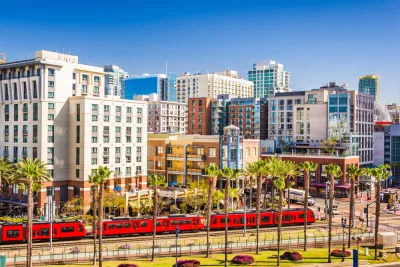One of the more pro-development mayors in the country won't approve an ordinance that would expand the reach of affordable housing requirements for new development.

"Mayor Kevin Faulconer said Tuesday he will veto new city regulations focused on requiring housing developers to build more low-income units, siding with the local business community over labor leaders and other supporters of the new policy," reports David Garrick.
The San Diego City Council narrowly approved an inclusionary zoning ordinance this week, by a vote of 5-4. An additional vote is necessary to override a mayoral veto.
Mayor Faulconer based the decision to veto the ordinance while siding with "economists and builders" that oppose the policy on the grounds that "will have the unintended consequence of leading to less affordable housing, not more," as explained in the words of an email from Faulconer spokesman Gustavo Portela, as cited by Garrick.
As for the details of the ordinance approved by the City Council, Garrick explains the ordinance in context of the city's existing policies:
The proposed law would require developers to reserve 10 percent of units in every project for people making 50 percent of the region’s median income or less, but the law would provide multiple alternative ways to comply with that requirement.
The city’s existing policy requires developers to make 10 percent of the units in a housing project affordable to families making 65 percent of the median income, so the proposal would drop that to 50 percent.
San Diego has been busy in 2019, approving and considering regulations intended to spur development in the city, including parking requirement reform and a new density bonus for affordable housing development. Mayor Faulconer has also called for new building heights in transit-adjacent development.
FULL STORY: San Diego mayor vetoing controversial proposal to require developers to build more low-income housing

Analysis: Cybertruck Fatality Rate Far Exceeds That of Ford Pinto
The Tesla Cybertruck was recalled seven times last year.

National Parks Layoffs Will Cause Communities to Lose Billions
Thousands of essential park workers were laid off this week, just before the busy spring break season.

Retro-silient?: America’s First “Eco-burb,” The Woodlands Turns 50
A master-planned community north of Houston offers lessons on green infrastructure and resilient design, but falls short of its founder’s lofty affordability and walkability goals.

Test News Post 1
This is a summary

Analysis: Cybertruck Fatality Rate Far Exceeds That of Ford Pinto
The Tesla Cybertruck was recalled seven times last year.

Test News Headline 46
Test for the image on the front page.
Urban Design for Planners 1: Software Tools
This six-course series explores essential urban design concepts using open source software and equips planners with the tools they need to participate fully in the urban design process.
Planning for Universal Design
Learn the tools for implementing Universal Design in planning regulations.
EMC Planning Group, Inc.
Planetizen
Planetizen
Mpact (formerly Rail~Volution)
Great Falls Development Authority, Inc.
HUDs Office of Policy Development and Research
NYU Wagner Graduate School of Public Service



























